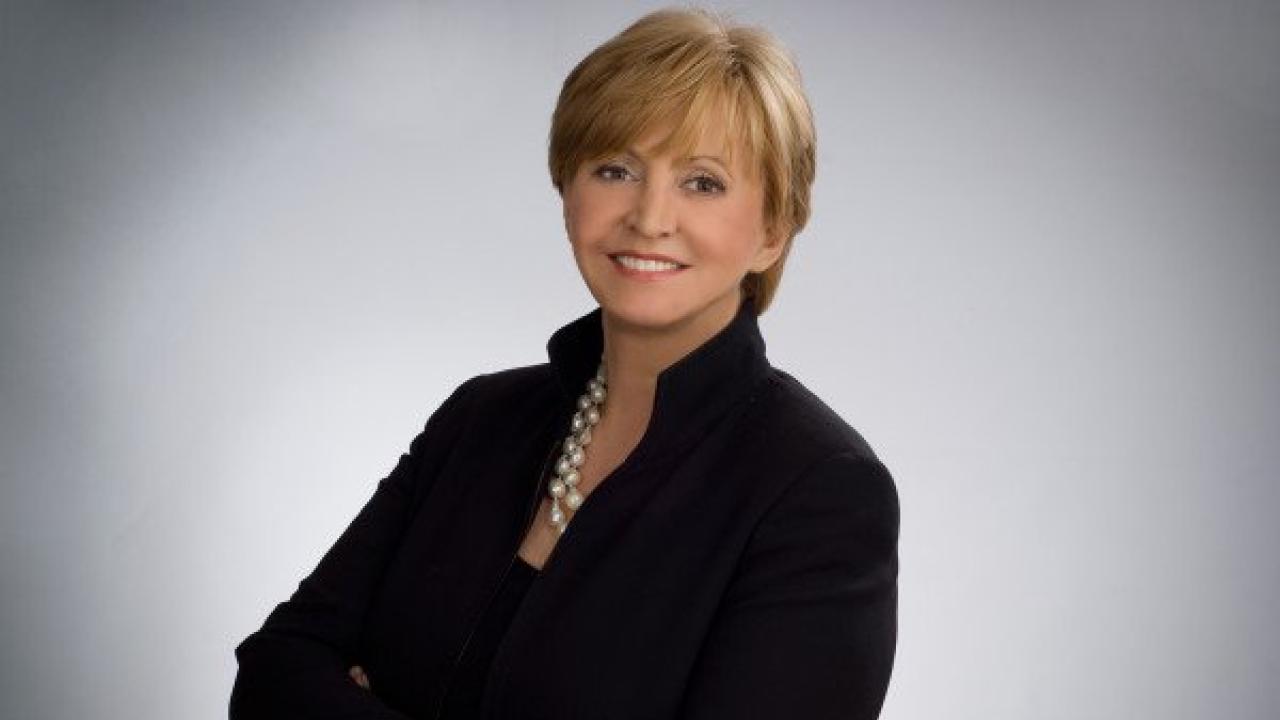
Chair of Radiology at Sloan-Kettering, Hedvig Hricak, Celebrates Imaging Advances While Pushing for More Widespread Use of Imaging Technology
Quick Summary
- Annual Maroney-Bryan lecture, presented by the Sloan-Kettering Cancer Center's Hedvig Hricak, focuses in on imaging advances and global inequities in cancer diagnostics and treatment
On Thursday November 18th, UC Davis’ department of biomedical engineering (BME) held its annual Maroney-Bryan lecture, presented by Dr. Hedvig Hricak, Chair of the Department of Radiology at Memorial Sloan Kettering Cancer Center (MSK).
Hricak is known for demonstrating the value of MRI for cancer diagnostics and helping make use of the tool more widespread. In her talk she outlined the potential of advances in medical imaging for improving cancer diagnosis and treatment.
Computed tomography (CT) scans have largely replaced exploratory laparoscopy: surgeons no longer operate on cancer patients in order to just locate tumors. Showing off a copy of Rembrandt’s famed painting The Anatomy Lesson, she suggested that a modern version of the painting would include computerized images of DNA.
When surgery is necessary, it can be image-guided with the help of fluorescent agents. This allows for better targeted operations with smaller incisions and shrinking surgical margins, improving patient recovery time and lessening the risk of complications. Sometimes robots can guide biopsies, making the procedure easier and more accurate.
Modern PET/CT scanning allows more accurate tumor detection than ever before, as well as heightened observations of intratumoral and intermetastatic heterogeneity. Hricak gave the example of a young woman patient for whom physicians could determine that while the kind of cancer she had in her lungs was responding to treatment, the cancer in her spine was still growing. This means we are better able to identify when a patient needs a combination of different therapies.
Hricak also discussed targeted radionuclide therapy and C-dots, which are ultrasmall silica imaging tools useful for cancer detection that are also potentially able to selectively kill cancer cells (as shown in a study led by Michelle Bradbury and Michael Overholtzer of MSK).
Unfortunately, these new medical technologies are not distributed evenly around the world. Hricak showed dramatic maps illustrating the extreme shortages of even basic devices such as ultrasound machines in developing countries. While even Australia and the U.K. have less diagnostic equipment than they need, the greatest shortages are in central Africa, Afghanistan/Pakistan, parts of the Middle East, and Malaysia.
Only five percent of global funding for cancer research and treatment is directed towards low and middle income countries, where cancer kills more people each year than AIDS, malaria, and tuberculosis combined. Globally, cancer cases went up 28 percent between 2012 and 2018, and a recent study showed that war and political instability are the strongest predictors of lower five-year survival rates for breast cancer.
“Unfortunately, it’s your postal code, rather than your genetic code, that determines your chances of survival,” said Hricak.
Right now there are 76 million cancer deaths per year around the world, and 5.4 million of those people could be saved by giving the entire world access to the care many people in high-income countries receive. However, 9.5 million people would be saved by including state-of-the art medical imaging tools along with that healthcare. And, doing this would increase the five-year survival rate in low income countries for all cancers from 3.8 percent to 45.2 percent.
“We need low-cost, portable, and AI-driven diagnostic tools,” said Hricak. She points to smartphone-linked ultrasound as a promising step, as CT scans and X rays make such a difference in cancer detection and survivability.
She suggested that the International Atomic Energy Agency (IAEA) should spearhead efforts to bring diagnostic tools to medical clinics around the world. “They need to do it strategically, one country at a time, and ensure the country has the infrastructure, including electricity, to implement the diagnostics.”
